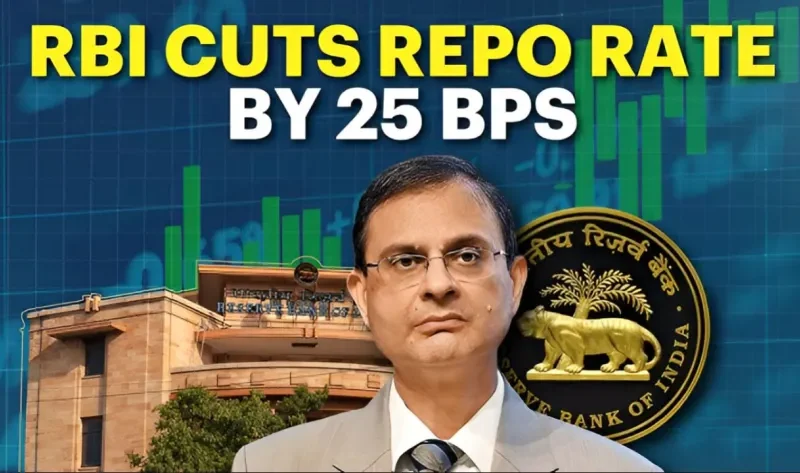The Reserve Bank of India (RBI) has reduced the repo rate by 25 basis points, bringing it down to 6.25%. This marks the first rate cut in nearly five years and signals a shift in monetary policy. The decision, taken unanimously by the Monetary Policy Committee (MPC) on February 7, 2025, aims to boost economic activity by making borrowing more affordable. This move highlights the RBI’s commitment to growth while keeping inflation in check.
Understanding the Repo Rate
- The repo rate is the interest rate at which the RBI lends money to commercial banks.
- A lower repo rate reduces borrowing costs for banks, which in turn can lower interest rates for businesses and consumers.
- This encourages spending, investment, and economic expansion.
Why Did RBI Cut the Repo Rate?
- The primary goal is to stimulate economic growth by making loans more accessible.
- With inflation under control, the RBI can afford to support economic expansion through this rate cut.
- The GDP growth projection for FY2025-26 is 6.7%, while retail inflation is expected to be around 4.2%.
Impact on Borrowers and Banks
- Home and personal loan EMIs are likely to become cheaper.
- Banks may lower their lending rates, making credit more affordable.
- Increased borrowing and investment can spur business growth and potentially create jobs.
Risks of Lower Interest Rates
- While lower rates encourage growth, they can also fuel inflation if too much money enters the economy.
- Savings returns may decline, making traditional saving options less attractive.
- A surge in borrowing without proper regulation could lead to financial instability.
Economic Growth and Inflation Outlook
- The RBI has adjusted its GDP growth forecast for FY2025 to 6.4%, a slight downward revision.
- Retail inflation is still expected to remain stable at 4.2% in 2025-26.
- The RBI follows a flexible inflation targeting strategy to ensure a balance between growth and price stability.
Global Economic Trends
- India’s rate cut aligns with global monetary policies, where central banks worldwide are adopting accommodative measures.
- This reflects a broader strategy to support economic recovery amid evolving financial challenges.
The RBI’s latest decision underscores its dual focus on economic stability and growth, ensuring a balanced approach to monetary policy.












